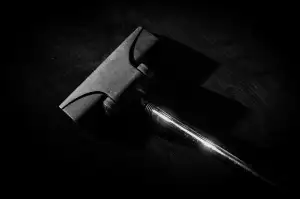Say Goodbye to Pesky Fruit Flies with this DIY Fruit Fly Trap: A Homeowner's Guide

Fruit flies can be a pesky nuisance in our homes, especially during the warmer months. These tiny insects are attracted to ripe fruits and vegetables, as well as any sugary or fermented substances. They can quickly multiply and infest our kitchens, leaving us frustrated and desperate for a solution. Fruit flies not only contaminate our food but also carry bacteria and pathogens, posing potential health risks to us and our families. It's essential to address this issue promptly and effectively before it becomes a full-blown infestation. In this article, we will explore the benefits of using a DIY fruit fly trap as a homeowner's guide to saying goodbye to these annoying pests once and for all.
Importance of using a DIY fruit fly trap
The importance of using a DIY fruit fly trap cannot be overstated. Fruit flies are not only annoying pests but can also carry and spread harmful bacteria, making them a health hazard in our homes. By using a DIY fruit fly trap, we can effectively control and eliminate these pesky insects without the need for harmful chemicals or expensive exterminators. This not only ensures the safety of our food and environment but also saves us from the frustration of dealing with constant fruit fly infestations. So, let's take matters into our own hands and say goodbye to those pesky fruit flies once and for all!
Materials required for making a homemade fruit fly trap
To make a homemade fruit fly trap, you will need a few simple materials that are easily found around the house. Here's what you'll need:
1. A small glass or plastic container with a lid: This will serve as the main body of the trap and should be able to hold the bait and trap the fruit flies inside.
2. Apple cider vinegar or red wine: Fruit flies are attracted to the sweet aroma of fermented fruits, so using apple cider vinegar or red wine as bait is highly effective.
3. Dish soap: Adding a few drops of dish soap to the bait helps break the surface tension of the liquid, causing the fruit flies to sink and drown.
4. Plastic wrap or cling film: To cover the top of the container, preventing any escape routes for the trapped fruit flies.
5. A toothpick or fork: This will be used to poke holes in the plastic wrap, creating entry points for the fruit flies.
With these materials on hand, you're ready to start constructing your very own DIY fruit fly trap!
Step-by-step instructions for constructing the trap
Step 4: Step-by-step instructions for constructing the trap
Now that you have gathered all the necessary materials, it's time to construct your very own fruit fly trap. Follow these simple steps:
1. Take the empty plastic bottle and remove the cap.
2. Using a sharp knife or scissors, carefully cut off the top one-third of the bottle.
3. Set aside the top portion of the bottle as you will only need the bottom part for this trap.
4. Take a piece of tape and wrap it around the cut edge of the bottle to prevent any sharp edges from causing harm.
5. Fill the bottom part of the bottle with about an inch or two of apple cider vinegar or red wine vinegar. The strong aroma will attract fruit flies.
6. Add a few drops of dish soap to break down the surface tension of the vinegar, making it easier for fruit flies to sink into it.
7. Take the top portion of the bottle that you set aside earlier and invert it into the bottom part, creating a funnel shape.
8. Make sure that there are no gaps between both parts of the bottle by sealing them tightly with tape or glue.
9. Use a toothpick or skewer to poke several small holes near the rim of the inverted funnel, allowing fruit flies to enter but not escape.
Congratulations! Your DIY fruit fly trap is now ready to be deployed in your home.
Remember to place multiple traps in different areas where fruit flies are commonly found for maximum effectiveness.
Stay tuned for step 5: Tips for effectively baiting your trap!
Tips for effectively baiting the trap
When it comes to effectively baiting your DIY fruit fly trap, there are a few tips to keep in mind. First, choose a bait that is highly attractive to fruit flies. Some popular options include ripe fruits like bananas or apples, vinegar, wine, or even a mixture of sugar and water. Experiment with different baits to see what works best for you.
Secondly, make sure the bait is exposed and easily accessible for the fruit flies. This can be done by placing small pieces of fruit or adding a few drops of liquid bait directly into the trap.
Additionally, consider adding a drop of dish soap to the bait mixture. This will break the surface tension and cause the flies to sink when they come into contact with it.
Lastly, remember to refresh the bait regularly. As it starts to decompose or dry out, it becomes less attractive to fruit flies. By replacing the bait every few days, you'll ensure that your trap remains effective in catching these pesky insects.
By following these tips for effectively baiting your DIY fruit fly trap, you'll increase your chances of successfully eliminating these annoying pests from your home.
Placement and maintenance of the fruit fly trap
Placement and maintenance of the fruit fly trap are crucial for its effectiveness. Once constructed, place the trap near areas where fruit flies are commonly found, such as the kitchen or dining area. Ensure that it is not obstructed by any objects and is easily accessible.
To maintain the trap, check it regularly to see if any fruit flies have been trapped. If there are fruit flies inside, empty the contents into a plastic bag and dispose of them properly. Clean the trap thoroughly with warm soapy water before refilling it with fresh bait.
It is important to note that fruit fly traps may need to be replaced every few weeks, depending on the level of infestation. Regularly monitor the trap to determine if it needs to be replaced or if additional traps need to be set up in other areas of your home.
By placing and maintaining the DIY fruit fly trap properly, you can effectively control and eliminate pesky fruit fly infestations in your home.
Benefits of using a DIY fruit fly trap
1. Cost-effective: Making your own fruit fly trap is much cheaper than purchasing commercial traps or hiring pest control services. You can easily find the materials needed at home or in a nearby store, saving you money in the long run.
2. Environmentally friendly: DIY fruit fly traps are made using non-toxic ingredients, making them safe for both humans and the environment. Unlike chemical sprays or insecticides, these traps do not release harmful fumes or chemicals into the air.
3. Easy to make and use: Constructing a homemade fruit fly trap requires minimal effort and basic household items. Anyone can follow the step-by-step instructions without any specialized knowledge or skills. Once set up, maintaining and baiting the trap is also hassle-free.
4. Effective solution: DIY fruit fly traps have been proven to be highly effective in capturing and eliminating fruit flies. The combination of a sweet bait and sticky surface attracts and traps these pesky insects, reducing their population significantly within a short period.
5. Versatile usage: Fruit fly traps can be placed in various areas of your home where fruit flies are commonly found, such as kitchens, pantries, or dining areas. They can also be used outdoors to prevent infestations near garbage bins or compost piles.
By utilizing a DIY fruit fly trap, you not only solve your fruit fly problem but also save money, protect the environment, and ensure a safe living space for you and your family.
In conclusion, fruit fly infestations can be a nuisance in any home. However, with the use of a DIY fruit fly trap, you can effectively eliminate these pesky insects and enjoy a fruit fly-free environment. By following the step-by-step instructions and using the right materials, you can easily construct your own trap at home. Remember to properly bait the trap and place it in strategic locations to maximize its effectiveness. Regular maintenance is also crucial to ensure that the trap continues to catch fruit flies. Using a DIY fruit fly trap not only helps in getting rid of these pests but also saves you money compared to store-bought traps. So say goodbye to fruit flies and hello to a clean and pest-free home!
Published: 14. 12. 2023
Category: Home



